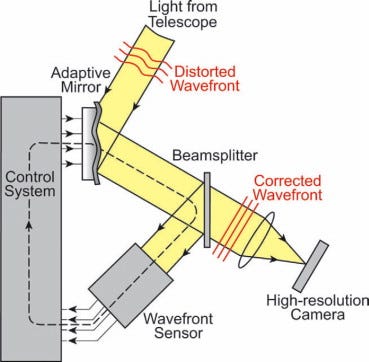Axial: https://linktr.ee/axialxyz
Axial partners with great founders and inventors. We invest in early-stage life sciences companies such as Appia Bio, Seranova Bio, Delix Therapeutics, Simcha Therapeutics, among others often when they are no more than an idea. We are fanatical about helping the rare inventor who is compelled to build their own enduring business. If you or someone you know has a great idea or company in life sciences, Axial would be excited to get to know you and possibly invest in your vision and company . We are excited to be in business with you — email us at info@axialvc.com
Eikon Therapeutics is a drug discovery company that uses single molecule imaging technology to study protein dynamics in living cells. The company's technology allows them to see and measure the movement of individual proteins in real time, which provides insights into how proteins interact with each other and with their environment.
This information can be used to identify new drug targets and develop new therapies for a variety of diseases. Eikon was founded in 2015 by Nobel laureate Eric Betzig and other scientists from the Howard Hughes Medical Institute. And is currently developing drugs for a variety of diseases, including cancer, neurodegenerative diseases, and infectious diseases.
Regulated Induced Proximity Targeting Chimeras (RIPTACs): a Novel Heterobifunctional Small Molecule Therapeutic Strategy for Killing Cancer Cells Selectively
The paper describes a novel therapeutic strategy called RIPTACs (Regulated Induced Proximity Targeting Chimeras) for killing cancer cells selectively. RIPTACs are heterobifunctional small molecules that elicit a stable ternary complex between a target protein selectively expressed in cancer tissue and a pan-expressed protein essential for cell survival. The resulting cooperative protein-protein interaction (PPI) abrogates the function of the essential protein, thus leading to cell death selectively in cells expressing the target protein.
Using the HaloTag7-FKBP model system as a target protein to demonstrate the efficacy of RIPTACs. The authors showed that RIPTACs that incorporate a covalent or non-covalent target ligand connected via a linker to effector ligands such as JQ1 (BRD4), BI2536 (PLK1), or multi-CDK inhibitors such as TMX3013 or dinaciclib, can accumulate selectively in cells expressing HaloTag7-FKBP, form stable target:RIPTAC:effector trimers in cells, and induce an anti-proliferative response in target-expressing cells. Concluding that RIPTACs are a novel heterobifunctional therapeutic modality to treat cancers that are known to selectively express a specific intracellular protein.
https://www.biorxiv.org/content/10.1101/2023.01.01.522436v1.full.pdf
The patent describes a microscope that uses adaptive optics to correct for aberrations in the LLS. Improving the resolution and speed of fluorescence microscopy by using a lattice light sheet (LLS). An LLS is a thin, sheet-like beam of light that can be used to illuminate a sample with minimal photobleaching or photodamage.
Adaptive optics uses a deformable mirror to compensate for distortions in the light beam. This allows the LLS to be focused more precisely, which improves the resolution of the images. The patent also describes a method for using the LLS to image cells in their native environment. This is done by collecting the light emitted from the sample in a direction perpendicular to the LLS. This allows the entire volume of the sample to be imaged without having to move the sample.
https://patentimages.storage.googleapis.com/25/8c/d6/ab5041e62ab59b/US20220317433A1.pdf
What are adaptive optics?
Adaptive optics (AO) is a technology that corrects for distortions in optical systems. It is used in astronomical telescopes and laser communication systems to remove the effects of atmospheric distortion, in microscopy, optical fabrication and in retinal imaging systems to reduce optical aberrations.
AO works by measuring the distortions in a wavefront and compensating for them with a device that corrects those errors such as a deformable mirror or a liquid crystal array. The wavefront of an aberrated image (can be measured using a wavefront sensor and then corrected for using a deformable mirror.
The deformable mirror is a grid of actuators that can be used to change the shape of the mirror in real time. The wavefront sensor measures the distortions in the wavefront and sends this information to a computer. The computer then calculates how to deform the mirror to correct for the distortions. This process is repeated many times per second, so that the image remains sharp and clear.
AO has revolutionized astronomical imaging. It has allowed astronomers to see objects that were previously too faint or too blurry to be observed. It has also allowed them to study objects in more detail, such as the surfaces of planets and stars.
Scientist Stories: Craig Crews - A pioneer in targeted protein degradation
Crews co-founded Proteolix, in 2003 whose proteasome inhibitor, Kyprolis received FDA approval for the treatment of multiple myeloma. His work is also credited with founding the field of ‘Targeted Protein Degradation’ drug development technology, i.e., PROTACs, which has the potential to target currently ‘undruggable’ disease causing proteins. In 2013, Crews launched the Arvinas, which is testing the first PROTAC-based drugs in clinical trials for prostate and breast cancer. Also founding Halda Therapeutics and Siduma Therapeutics.







